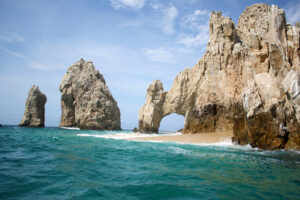Our Travel Blog
Destination Inspiration

Oman
This geologically diverse nation is known for its history, culture, and hospitality.

Curaçao
Curacao will appeal to culture seekers and beach lovers alike. Alive with history and interesting stories travelers can stroll and explore Curacaos ancient neighborhoods.

Malta
Malta consists of 3 islands: Malta, Comino and Gozo. In addition to it’s ancient sites and world renowned diving, Malta is known for its nightlife.
Destination Wedding Inspiration

10 Tips for Choosing a Destination Wedding Location
Selecting your dream destination wedding locale is a breeze with these 10 key tips. From accessibility for guests to the charm of local culture, and from budgeting to weather considerations, ensure your special day is as perfect as envisioned. Connect with a destination wedding travel agent for tailored advice.

What to Wear to a Destination Wedding
It’s not unusual for guests to wonder what to wear to a destination wedding. Destination wedding dress codes range from beach casual (a simple sundress will suffice) to tropical formal (a long chiffon, tulle, lace or rayon gown, or a maxi dress with accessories might be the best choice.)

8 Top Destination Wedding Trends of 2022
In this article we pause for a hot second to catch our breath and take a look at the 8 top destination wedding trends of 2022. Most if not all of these trends or in response to or in spite of pandemic life.
Going With Groups

Group Getaways: The All-New Virgin Voyages
When it comes to travel innovations, it can sometimes seem like, as my mom used to say, “there’s nothing new under the sun kiddo.” Well for me that…

Introducing Learning Escapes
Introducing Learning Escapes Enlighten Excursions’ New Small Group Slow Travel Experiences Tokyo Japan, November 2024 – Japanese Tea Ceremony At Enlighten Excursions, we believe that travel is more than just sightseeing—it’s about deep cultural immersion, meaningful connections, and transformative experiences. That’s why we are thrilled to introduce Learning Escapes, our new series of small-group slow travel adventures. These journeys are designed for intellectually curious travelers who value discovery, cultural authenticity, and the joy of learning while exploring the world at a relaxed and enriching pace. What Are Learning Escapes? Learning Escapes are meticulously curated small-group travel experiences offered at least four times per year, providing an opportunity to deeply engage with a destination’s history, culture, and people. Unlike fast-paced, checklist-driven tours, these journeys focus on immersion and personal connection, allowing you to truly absorb the essence of a place. With a maximum group size of around 12 travelers, these escapes provide the camaraderie of a group while maintaining an intimate and personalized feel. The Benefits of Attending a Learning Escape Deep Cultural Immersion Learning Escapes go beyond surface-level tourism. Through hands-on activities, expert-led discussions, and intimate local encounters, travelers gain a deeper appreciation for the customs, traditions, and histories that shape each destination. Whether it’s a private cooking class in a Tuscan farmhouse, an archaeology-led tour of an ancient ruin, or a conversation with a local artisan in Morocco, each experience is designed to foster meaningful connections. Hassle-Free, Expert-Guided Travel Planning a culturally immersive trip can be overwhelming. Learning Escapes eliminate the stress by providing expertly curated itineraries, comfortable accommodations, and seamless logistics. Our experienced travel guides and local experts ensure that every detail is thoughtfully planned so that you can focus on enjoying the experience. Enriching, Educational Experiences Designed for lifelong learners, Learning Escapes incorporate storytelling, expert insights, and interactive experiences that make history, art, and culture come alive. Whether exploring the origins of classical music in Vienna or uncovering the geological wonders of Iceland, every journey offers the opportunity to expand your knowledge in a dynamic and engaging way. Small Group Camaraderie One of the greatest joys of travel is sharing experiences with like-minded individuals. Our small group format fosters a sense of community, encouraging stimulating conversations and friendships that often last long after the trip ends. Travelers who may not want to journey solo but also prefer a more intimate experience than large tours will find the perfect balance with Learning Escapes. Slow Travel for a More Meaningful Experience Learning Escapes embody the principles of slow travel—an approach that prioritizes quality over quantity. Instead of rushing from one attraction to the next, we encourage travelers to savor each moment, engage with locals, and develop a true appreciation for the places they visit. Hiroshima, Japan November 2025 The Benefits of Slow Travel Deeper Connection with Destinations Slow travel allows for a richer, more meaningful engagement with a place. Rather than skimming the surface, you have the time to immerse yourself in local traditions, cuisine, and daily life. Pictured above residents of Yokahoma, Province Japan kindly gave us a lesson in the art of making origami cranes. Reduced Travel Fatigue Rushing from one city to another can be exhausting. Slow travel promotes a more relaxed pace, allowing you to absorb the atmosphere and fully enjoy each experience without feeling overwhelmed. More Authentic Experiences When you take the time to explore a destination at a slower pace, you’re more likely to discover hidden gems, forge genuine connections, and experience a place as the locals do rather than as a hurried tourist. Sustainability and Responsible Tourism Slow travel encourages more responsible tourism practices by reducing the environmental impact of frequent transportation and supporting local businesses. Staying longer in fewer places allows for more meaningful engagement with local communities. Join Us on a Learning Escape Whether you’re a seasoned traveler or embarking on your first immersive journey, Learning Escapes offer the perfect blend of exploration, intellectual enrichment, and cultural connection. Our upcoming Learning Escapes will take you to some of the world’s most fascinating destinations, where history, art, and tradition come to life. Are you ready to experience travel in a whole new way? Join us on an upcoming Learning Escape and rediscover the joy of meaningful exploration. Upcoming Escapes

Escorted Group Travel: Key Advantages
Africa, Europe & Asia do not have the abundance of all-inclusive resorts that you will find in the Caribbean. However, if you’re interested in an all-inclusive …
Cultural Travel Inspiration

5 Reasons You Should Visit Los Cabos Mexico
Los Cabos, located at the southern tip of the Baja California Peninsula, is a dream vacation destination with something for everyone. There are at least a dozen reasons why you should visit Los Cabos. But, for the sake of brevity, we’ve compiled a list of the top five reasons to visit Los Cabos for your next vacation.

New Years Eve in Dubai 2025
Celebrate New Years Eve in Dubai 2025. Witness the world’s most iconic countdown to 2026, set against the backdrop of Dubai’s glittering skyline, for an unforgettable start to the new year!
This meticulously curated itinerary is designed for discerning travelers who appreciate luxury, adventure, and rich cultural encounters.

Where to Go When- Istanbul
Ahhh… This is the money shot! The blue sky beams brightly over Istanbul’s Blue Mosque. But, what are the chances that when you go to Turkey circumstances will converge so that you can get the money shot? It depends. When advising you when to travel, a number of sites focus almost solely on the costs. If you’re […]
Luxury Wander

Dreams Riviera Cancun
Cancun, Mexico
Set along a natural white-sand beach in the Riviera Maya, surrounded by lush tropical gardens and the crystal-clear Caribbean, Dreams Riviera Cancun is a luxurious oasis for couples and families.

Sandals Royal Bahamian
Nassau, Bahamas
The all-inclusive adults-only Sandals Royal Bahamian delivers leisure and decadence in an oasis of ‘old world charm’ and understated elegance.

Paradisus Playa Del Carmen & La Perla
Playa del Carmen, Mexico
Located on a pristine white sand beach in the Yucatan peninsula, these well-situated all-inclusive sister resorts are the ideal spot to enjoy luxurious accommodations and explore all that Playa del Carmen has to offer.
Romance Travel

The Intimate Vow Renewal
While many couples choose to have a destination vow renewal with all the bells and whistles, others choose more intimate ceremonies. Some keep the guest list small opting for just close friends and family. Others go smaller still with just the couple and the children. And, of course, It doesn’t get more intimate than a private ceremony for two.

Avoid These Top 5 Honeymoon Mistakes
It can cost as much as $300 to change the name on an airline ticket if you’re allowed to change it at all. It’s important that the name on your

Top Destination Wedding Locations: Punta Cana, Dominican Republic
When you envision the perfect wedding setting, do you picture a pristine beach set among lush palms with gorgeous blue waters and white sand? Then you are no doubt picturing Punta Cana. Aptly named the ‘Coconut Coast’, the stretch of beaches and resorts along the eastern coast of the Dominican Republic is an oasis for devoted couples. It is among the […]
What You Need to Know

Southwest Abandons Free Changes Free Bags Open Seating
Southwest Abandons Free Changes Free Bags Open Seating What This Means for Southwest’s Loyal Travelers Photo by Sven Piper Southwest Airlines, renowned for its customer-friendly policies and unique operational model, is embarking on a series of significant changes set to reshape the travel experience for its passengers. That’s right! This year we will bear witness as Southwest abandons free changes, free bags, open seating: the perks and policies that many of us love most about this airline. These transformations, scheduled to roll out through 2025 and beyond, mark a departure from long-standing traditions that have defined the airline for decades. This article delves into these three pivotal changes: the end of open seating, the introduction of fees for flight changes, and the implementation of charges for checked baggage. No More Open Seating For over 50 years, Southwest Airlines has operated on an open seating policy, allowing passengers to choose their seats upon boarding. This first-come, first-served approach has been a distinctive feature of the airline, setting it apart from competitors. However, in July 2024, Southwest announced plans to transition to assigned seating, a move driven by extensive customer research indicating that 80% of current and 86% of potential customers prefer assigned seats. The shift to assigned seating is slated to begin later this year, with the airline starting to sell assigned seats in the second half of 2025 and implementing the new system in early 2026. This change aims to enhance the customer experience by providing clarity and reducing the anxiety associated with open seating. Moreover, Southwest plans to introduce premium seating options with extra legroom, catering to passengers seeking additional comfort during their flights. Photo by Lukas Souza No More Free Changes Historically, Southwest has been lauded for its flexible policies, notably allowing passengers to change their flights without incurring additional fees. This flexibility has been a significant draw for travelers seeking adaptable travel plans. However, as part of its new business strategy, Southwest is introducing a Basic Fare option for its lowest-priced tickets purchased on or after May 28, 2025. This fare category is expected to come with more restrictions, potentially including fees for flight changes and cancellations, aligning Southwest’s policies more closely with those of other major carriers. The introduction of a Basic Fare aims to attract more price-sensitive customers while allowing the airline to generate additional revenue through ancillary fees. This move reflects a broader industry trend where airlines unbundle services traditionally included in the ticket price, offering lower base fares but charging for add-ons such as seat selection, baggage, and flight changes. While this approach provides more options for consumers, it also requires travelers to be more vigilant about the terms and conditions associated with their tickets. Photo by Evan Didier No More Free Bags Perhaps the most controversial change is the end of Southwest’s longstanding “Bags Fly Free” policy. Since its inception, the airline has allowed all passengers to check two bags free of charge, a policy that has been a cornerstone of its customer-friendly image. However, starting May 28, 2025, Southwest will begin charging for checked bags, with free checked baggage limited to certain customers, including A-List Preferred Members, Business Select passengers, A-List Members, and Rapid Rewards Credit Card Members. The decision to implement baggage fees aligns Southwest with its competitors, which have long charged for checked bags and basic economy fares. Analysts expect Southwest to generate around $1.5 billion annually from this new fee, providing a significant boost to the airline’s profitability. However, this move risks alienating loyal customers who have valued the simplicity and cost savings associated with the free baggage policy. Industry experts caution that while the introduction of bag fees may improve the airline’s financial performance, it could also lead to a loss of market share among leisure travelers who may seek alternatives that offer more inclusive pricing. What This Means for Travelers Southwest Airlines is shaking things up in a big way, moving away from some of the policies that have made it stand out for years. Switching to assigned seating is meant to make flying less stressful for some travelers by eliminating the scramble for seats. Meanwhile, the new Basic Fare—likely to come with more restrictions on flight changes—is a clear play to attract budget-conscious travelers while potentially bringing in extra revenue. And while these new checked baggage fees aligns Southwest with industry norms, it absolutely risks alienating loyal customers, like me, who have always appreciated the airline’s inclusive pricing. As these changes take effect, passengers will need to adapt to the new policies and carefully read and consider the terms and conditions associated with their tickets. While these adjustments may enhance Southwest’s competitiveness and profitability, they also represent a departure from the airline’s traditional emphasis on customer-friendly policies. I guess we’ll just have to wait and see how these changes impact Southwest’s market position and customer loyalty in this increasingly competitive airline industry. Read More Travel News and Tips

New Entry and Exit Requirements: Europe and the UK
New Entry and Exit Requirements: Europe and the UK The Demise of the Passport Stamp? If you’re planning a trip to Europe or the United Kingdom in the coming year, be prepared for some new digital gatekeepers at the border. Gone are the days of collecting passport stamps like souvenirs—now, Big Brother (or at least his slightly more bureaucratic cousin) will be keeping tabs on your travel electronically. The European Union and the UK are introducing these systems to streamline border security, enhance safety, and track visitors more efficiently. Here’s what you need to know about these upcoming changes, why they’re happening, and how to avoid any airport meltdowns. New UK Entry Requirement: Electronic Travel Authorization (ETA) The UK is rolling out its own version of digital pre-clearance. If you were hoping to just breeze in with nothing but a smile and a passport, think again—starting in January 2025, the Electronic Travel Authorization (ETA) is required for travelers from visa-exempt countries. Important Facts About ETA: The system rolled out in January 2025 for some travelers and will be fully enforced by April 2025. Travelers must apply online before departure, paying a £10 fee (because, of course, there’s a fee). An approved ETA allows multiple visits over two years. Irish citizens and UK visa/residency holders are exempt. Transit passengers passing through the UK border will need an ETA, but those remaining airside are temporarily exempt (until the UK changes its mind again). New Entry/Exit System (EES) for the European Union The EU is also getting in on the digital action. The Entry/Exit System (EES) is set to launch in October 2025 and will replace the passport stamping process for non-EU travelers. If you thought border control was slow before, just wait until everyone’s standing around fiddling with fingerprint scanners. How It Works: Travelers from visa-exempt countries (like the U.S., Canada, and the UK) will have fingerprints and facial recognition recorded upon arrival. Entries and exits will be logged digitally—passport stamps are out, algorithms are in. The system will automatically detect overstays, so no more sneaky long vacations without consequences! European Travel Information and Authorization System (ETIAS) If that wasn’t enough, the European Travel Information and Authorization System (ETIAS) is coming in late 2026. Think of it as the EU’s version of the U.S. ESTA: a quick(ish) online application that travelers from visa-exempt countries will need to complete before visiting the Schengen Zone. Key Details: Cost: €7 (because nothing good in travel is free anymore). Validity: Three years or until passport expiration. Processing Time: Most applications should be approved in minutes, though “technical difficulties” may occur (read: check early and often). Will European Passport Stamps Become a Thing of the Past? For all the passport stamp collectors, brace yourselves: once the EES is fully implemented, passport stamps will be history. No more proof of your globetrotting unless you start collecting boarding passes instead. Exceptions & Possible Workarounds: Non-Schengen European Countries – Ireland, Albania, Serbia, Bosnia & Herzegovina, and Turkey still stamp passports (for now). Border Officer Discretion – If you bat your eyelashes at the right officer, they might stamp your passport, but don’t count on it. Small Regional Crossings – Some under-the-radar border posts may still use stamps—until they upgrade. Microstates – Places like Andorra, Monaco, and San Marino don’t have their own border control, but might give you a stamp if you ask nicely. If you’re really committed to getting one last European stamp, go this year, or start practicing your best puppy-dog eyes at border control. Why Are These Changes Happening? Governments claim these new systems are designed to: Enhance Security – Digital tracking helps identify threats before they enter. Reduce Fraud & Overstays – No more disappearing into Europe for months without notice. Improve Border Efficiency – Automated entry means fewer lines, in theory (but we’ll see about that). Match Global Trends – The U.S., Canada, and Australia already have similar systems, so Europe doesn’t want to be left behind. Tips for Travelers Want to avoid a last-minute “what do you mean I need approval?!” moment? Follow these tips: Apply Early – Don’t wait until the night before your flight to apply for ETIAS or a UK ETA. Check Your Passport – Make sure it’s valid for at least six months beyond your trip. Stay Updated – Governments love changing deadlines; keep an eye on official travel sites. Plan for Extra Time – While these systems should make things smoother, early implementation may come with long airport queues. With all these new digital hoops to jump through, traveling to Europe and the UK is about to feel more like logging into your online bank account. But don’t worry—with a little preparation, you’ll still get to enjoy your European getaway, even if your passport pages stay tragically empty. More Travel Tips

Are Passports Required for Cruises?
Are Passports Required for Cruises? Navigating Cruise Travel Documentation: A Comprehensive Guide Hello, cruise enthusiasts! As we embark on another voyage into the world of travel preparation, let’s dive deeper into a topic that’s crucial for smooth sailing: travel documentation. In the era of post-Covid travel, the question “are passports required for cruises” has taken on new significance. So, let’s navigate these waters together, ensuring you’re well-prepared for your next cruise adventure. The Indispensable Passport Book The passport book is undeniably the MVP of travel documentation. Here’s why Enlighten Excursions Travel, and frankly, anyone with a hint of wanderlust, considers it a non-negotiable companion: Embarkation Essentials: Regardless of your online check-in status, your passport book is your golden ticket onto the ship. This is critical. Cruiselines will not allow any guest onboard without the proper documents. And you will not get a refund. Smooth Sailing Back Home: It plays a pivotal role in re-entering the United States, ensuring minimal delays. Emergency Exits: In unexpected situations where you need to fly back to the U.S. or catch up with your ship in another country, your passport is indispensable. Validity Vitality: Make sure your passport doesn’t expire within six months post your travel dates. It’s a standard requirement that could otherwise halt your holiday plans. In essence, while the question “are passports required for cruises” may seem simple, the answer underscores the passport’s importance for any travel beyond U.S. borders. U.S. Domestic Cruises: Your Document Arsenal Opting for a cruise that loops from and back to the same U.S. port? You’ve got a variety of document options, though nuances exist, especially for specific destinations: WHTI-Compliant Documents: Beyond the passport book and card, consider a State Enhanced Driver’s License, Certificate of U.S. Naturalization, or a Native American Indian Card. Birth Certificate Backup: U.S.-born citizens might also use a birth certificate, coupled with a government-issued photo ID, for these cruises. Yet, remember, digital IDs won’t cut it. Special Mentions: Heading to Colombia or Greenland? Here, a passport book becomes an absolute must, emphasizing the varied requirements based on your itinerary. This segment sheds light on the options available for domestic cruisers but also highlights the necessity of a passport book for certain international touches. Sailing Internationally: Beyond the Basics Venturing further afield to Europe, Asia, or perhaps on a Transatlantic journey? The documentation requirements become more stringent: Passport Book Requirement: For these destinations, a passport book valid for six months post-travel is your ticket in. Visa Requirements: While European cruises don’t necessitate a Schengen Visa, other international destinations might require additional visas or documentation, making early preparation key. If in doubt we recommend that you contact CIBT Visas for expert advice on your passport/visa/tourist card needs. CIBT Visas also offers expedited passport services. Call CIBT at 844-890-1134 and let them know that you were referred by Enlighten Excursions Travel account #105968 to receive a discounted rate on their services. And you can find additional international travel resources on our website’s resource page. Airborne Aspects: Flying to Your Cruise If your cruise vacation starts or ends with a flight, here’s what you need to know: Passport for Air Travel: A valid U.S. passport is required for air travel to or from the U.S., highlighting the importance of this document even before you set foot on the ship. REAL ID Update: By May 7, 2025, a REAL ID-compliant driver’s license or another acceptable form of ID will be necessary for domestic air travel, adding another layer to your travel prep checklist. Consistency Is Key: Matching Names A seemingly minor detail that can cause major headaches is the consistency of names across your travel documents: Name Matching: Your cruise and airline tickets must match the name on your government-issued photo ID. Discrepancies can lead to denied boarding, so double-check this detail. Documentary Evidence: In cases of name changes due to marriage, divorce, or legal reasons, carrying documents like a marriage certificate or a legal name change court document is crucial. Minors on Board: Special Considerations Traveling with minors requires additional forethought, especially if not all legal guardians are present: Authorization Letter: A signed letter from absent parent(s) or legal guardians can facilitate a smoother process, especially with Homeland Security. Legal Documentation: In cases where there is no second parent with legal claims, carrying relevant paperwork like a court decision or a death certificate is advisable. Territory and Commonwealth Citizens Residents of U.S. Territories and Commonwealths face similar documentation requirements: Passport Necessity: For air, land, or sea travel, a valid U.S. passport book is your go-to document, further emphasizing its universal importance in travel. Diving Deeper: Additional Documentation Insights For those keen on understanding every aspect of cruise travel documentation, here’s more to consider: U.S. Passport Card: Ideal for land and sea travel but not valid for air travel outside the U.S., this document offers flexibility for specific travel scenarios. Enhanced Driver’s License: A handy ID for those from certain states, offering a seamless entry at land and sea ports but not for air travel outside the U.S. What to Avoid Equally important is knowing what won’t work: Unacceptable Documents: Digital IDs, photocopies of WHTI-compliant documents, temporary driver’s licenses without a photo, and a variety of other non-official documents won’t pass muster. Conclusion: A Passport to Peace of Mind In wrapping up our deep dive into the essentials of cruise travel documentation, the takeaway is clear: while the answer to the question “are passports required for cruises” can depend on various factors, possessing a valid passport book simplifies the process and enhances your travel security. Whether you’re exploring domestic waters or setting sail for international horizons, this pivotal document serves as your passport to peace of mind. With it, you’re ready to embrace the joys of cruising, secure in the knowledge that your travel documentation is shipshape. Need to apply for or update your passport? Just head to the state department website to get it done! Concerned about eligibility? Take a look at 6 Reasons the
